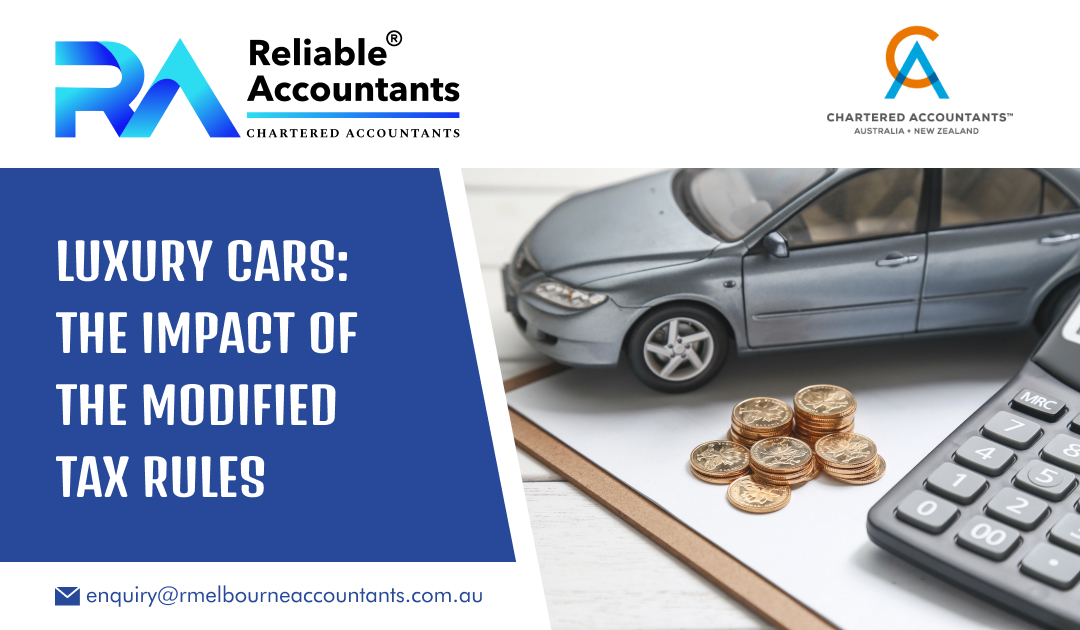As luxury vehicle purchase continue to rise, it is important to understand certain tax systems features that could affect the actual cost of acquisition. The tax rules usually lead to less favourable results for those using luxury cars for business or income-generating activities compared to non-luxury vehicles, although the specifics depend on the situation. Let’s explore the primary tax rules surrounding luxury cars and how they might affect your tax position.
Depreciation Deductions and GST Credits
Usually, when someone buys a vehicle for business or income-generating purposes, they can claim depreciation deductions over the vehicle’s useful life. Instead of an immediate deduction for the entire cost, the deduction is spread out over several years.
Plus, if a taxpayer is registered for GST, they may be able to reclaim GST credits on the vehicle’s purchase cost for business use. However, the rules change when it comes to luxury cars. Tax limitations can affect your ability to claim depreciation deductions and GST credits, increasing the after-tax cost of the vehicle.
How Does It Work?
Each year, the ATO sets a luxury car limit, which is $69,674 for the 2025-26 income year. If the vehicle’s total cost exceeds this limit, it can impact both the GST credits and depreciation deductions that can be claimed.
For example, if Alice purchases a new car for $88,000 (including GST) in July 2025 and uses it exclusively for business purposes while being registered for GST, here’s how the rules apply:
First, Alice’s GST credit claim would be capped. Instead of receiving the full $8,000 in GST credits, she can only claim $6,334 (which is 11% of the luxury car limit of $69,674).
Next, after subtracting the $6,334 GST credit, the remaining cost of the car is $81,666. Since this still exceeds the luxury car limit, her depreciation deductions will also be capped.
Although Alice paid $88,000 for the car, her depreciation deductions will be based on a deemed cost of $69,674, meaning she loses out on both GST credits and depreciation deductions because she bought a luxury vehicle.
Exceptions to the Rules
There are some important exceptions to these rules. The rules only apply to vehicles that are considered ‘cars’ under the tax system. That is, the car limit doesn’t apply if the vehicle is used to carry a load of at least one tonne or carry at least 9 passengers. The rules only apply if the vehicle was primarily used for carrying passengers. The way we determine is based on the nature of the vehicle and whether we are dealing with a dual-cab ute or not.
Luxury Car Lease Arrangements
When entering into a lease arrangement for a car, and using the car for business or employment duties, you will have an opportunity to claim deductions for the lease payments, adjusted for any personal usage.
However, if the car value exceeds the luxury car limit, the tax rules apply differently. In this case, the taxpayer is supposed to have bought the car using borrowed money. Instead of claiming deductions for the actual lease payments, we will claim deductions for notional interest charges and depreciation, within the luxury car limit.
Luxury Car Tax
Cars with a Luxury Car Tax (LCT) value exceeding the LCT threshold for the year are subject to LCT. This tax is calculated as 33% of the amount above the LCT threshold.
For the 2025-26 income year, the LCT thresholds are as follows:
- $91,387 for fuel-efficient vehicles
- $80,567 for all other vehicles covered by LCT rules
Starting on 1 July 2025, the definition of a fuel-efficient vehicle has changed. A car will now qualify for the higher LCT threshold only if its fuel consumption does not exceed 3.5 litres per 100 km (previously, the limit was 7 litres per 100 km). Purchasing a car or other motor vehicle can be a complex process, and there are many factors to consider. If you require assistance with the tax implications, please let us know before you sign any agreements.

